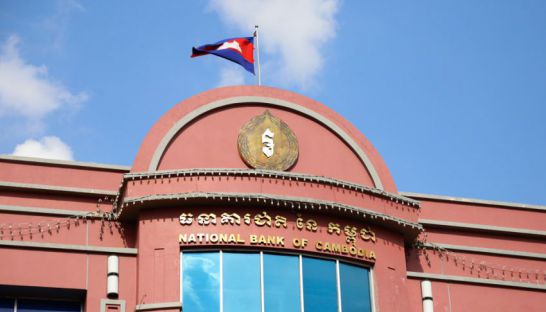With continued growth, Cambodia’s finance sector aims for stability
The Kingdom’s financial sector continued to expand robustly during the first half of this year with outstanding loans and deposits increasing compared to the same period last year, reflecting sustainable development and growing public confidence in the sector, according to the latest report by the central bank. However, with enlarged growth the rate of non-performing loans has also increased.
According to the National Bank of Cambodia’s (NBC) first semester report released on Saturday, outstanding loans across the industry grew by 20.4 percent to $18.8 billion by the end of June, while deposits increased by 23.4 percent to $17.4 billion.
The non-performing loan (NPL) rate for banks increased to 2.5 percent and to 2 percent for microfinance institutions (MFIs), compared to an industry-wide average of 1.46 percent for the same time last year.
Chea Chanto, governor of the NBC, said during the release on Saturday that the growth of the Cambodian financial sector in first half of this year was healthy and the enlargement contributed to economic stability.
“Cambodia’s banking and financial sector continues to grow strongly and competitively with more financial inclusion,” he said. He added that the combined banks assets across the sector equalled 150 percent of Cambodia’s annual GDP, with loans and deposits representing 92 percent and 85 percent respectively. However, he warned that the central bank had to stay committed to reducing risk and monitoring the sector.
“The [quality of] credit information will be strengthened in order to reduce credit risk and to boost transparency while we are working on a plan to protect depositors to build stronger confidence in the financial sector,” he said.
The report highlighted that the total outstanding loan amounts for banks reached $15.1 billion during the first half of this year, an increase of 18.5 percent compared to the same time last year, while deposits increased 22 percent to $15.7 billion. For the MFI industry, outstanding loan amounts reached $3.6 billion, while deposits increased 38 percent to $1.7 billion.
Despite the growth in the NPL rate to 2.5 percent for the sector, So Phonnary, vice president of Acleda Bank, said that it was not a huge concern despite the quality of loans showing signs of deterioration. She added that for Acleda, the bank’s NPL rate had risen from 0.7 percent for the first six months of 2016, to over 1 percent this year.
“The demand and price of agricultural crops was not good this year and it has affected our farmers’ incomes and their ability to make loan repayments,” she said. “I think the growth rate in the second half of this year will be lower as lenders increase the quality of their loans and make them less risky.”
She added that the increased NPL rate should serve as a warning for all financial operators to strengthen lending protocols.
Bun Mony, an adviser to Cambodia Microfinance Association, said that the healthy growth rate for MFIs during the first half of this year showed that the sector was meeting rural demands. However, he also predicted that lending would slow down for the rest of the year as MFIs more carefully vetted loans into the risky agricultural sector.
He added that the controversial government-mandated interest rate cap of 18 percent on new MFI loans applied in April could potentially slow the growth of credit later this year and the next.
“For this year, it is hard to see how the interest rate cap will impact lending,” he said. “It will be clearer later on when the majority of our loans shift to the lower interest rate because right now large shares of our loans are still operating on higher rates.”
Source: http://www.phnompenhpost.com/business/continued-growth-cambodias-finance-sector-aims-stability


 Thailand
Thailand




